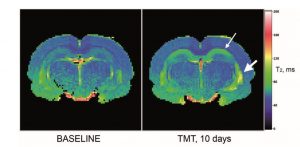Changes in the metabolome and microRNA levels in biological fluids might represent biomarkers of neurotoxicity: A trimethyltin study.

Abstract:
Neurotoxicity has been linked with exposure to a number of common drugs and chemicals, yet efficient, accurate, and minimally invasive methods to detect it are lacking. Fluid-based biomarkers such as those found in serum, plasma, urine, and cerebrospinal fluid have great potential due to the relative ease of sampling but at present, data on their expression and translation are lacking or inconsistent. In this pilot study using a trimethyl tin rat model of central nervous system toxicity, we have applied state-of-the-art assessment techniques to identify potential individual biomarkers and patterns of biomarkers in serum, plasma, urine or cerebral spinal fluid that may be indicative of nerve cell damage and degeneration. Overall changes in metabolites and microRNAs were observed in biological fluids that were associated with neurotoxic damage induced by trimethyl tin. Behavioral changes and magnetic resonance imaging T2 relaxation and ventricle volume changes served to identify animals that responded to the adverse effects of trimethyl tin. Impact statement These data will help design follow-on studies with other known neurotoxicants to be used to assess the broad applicability of the present findings. Together this approach represents an effort to begin to develop and qualify a set of translational biochemical markers of neurotoxicity that will be readily accessible in humans. Such biomarkers could prove invaluable for drug development research ranging from preclinical studies to clinical trials and may prove to assist with monitoring of the severity and life cycle of brain lesions.





